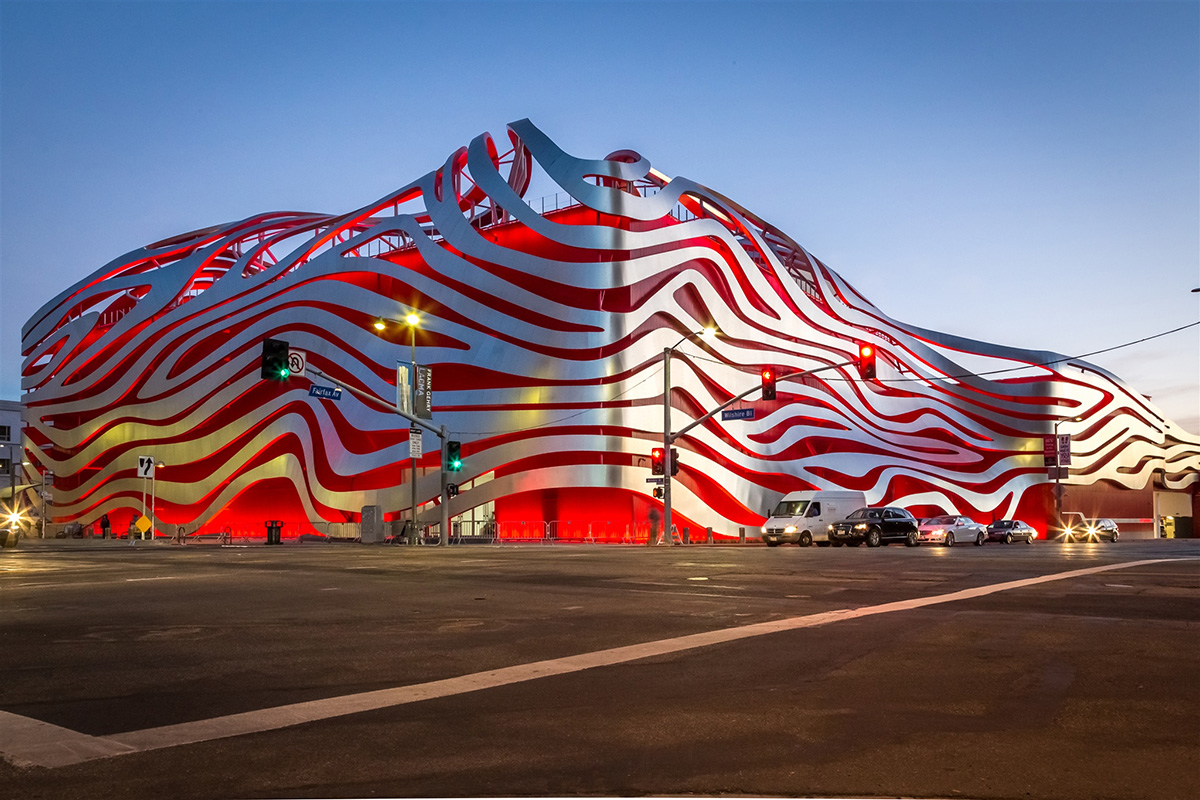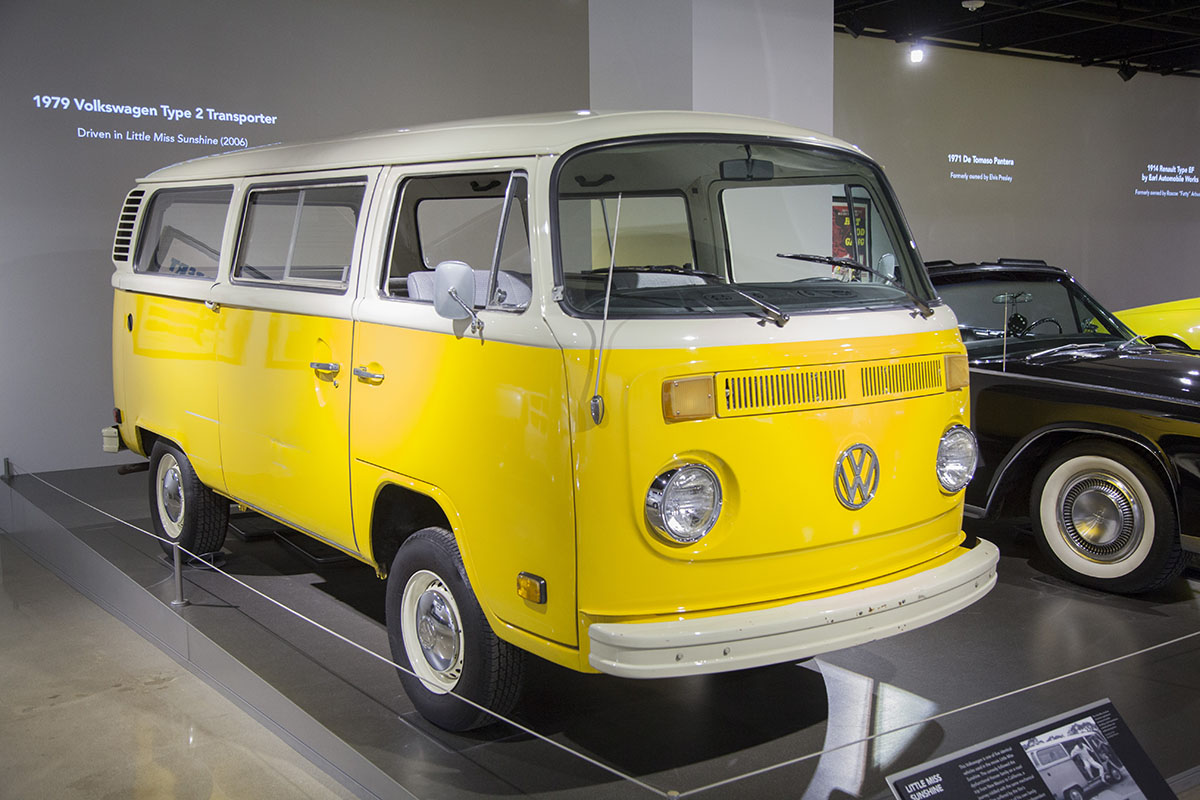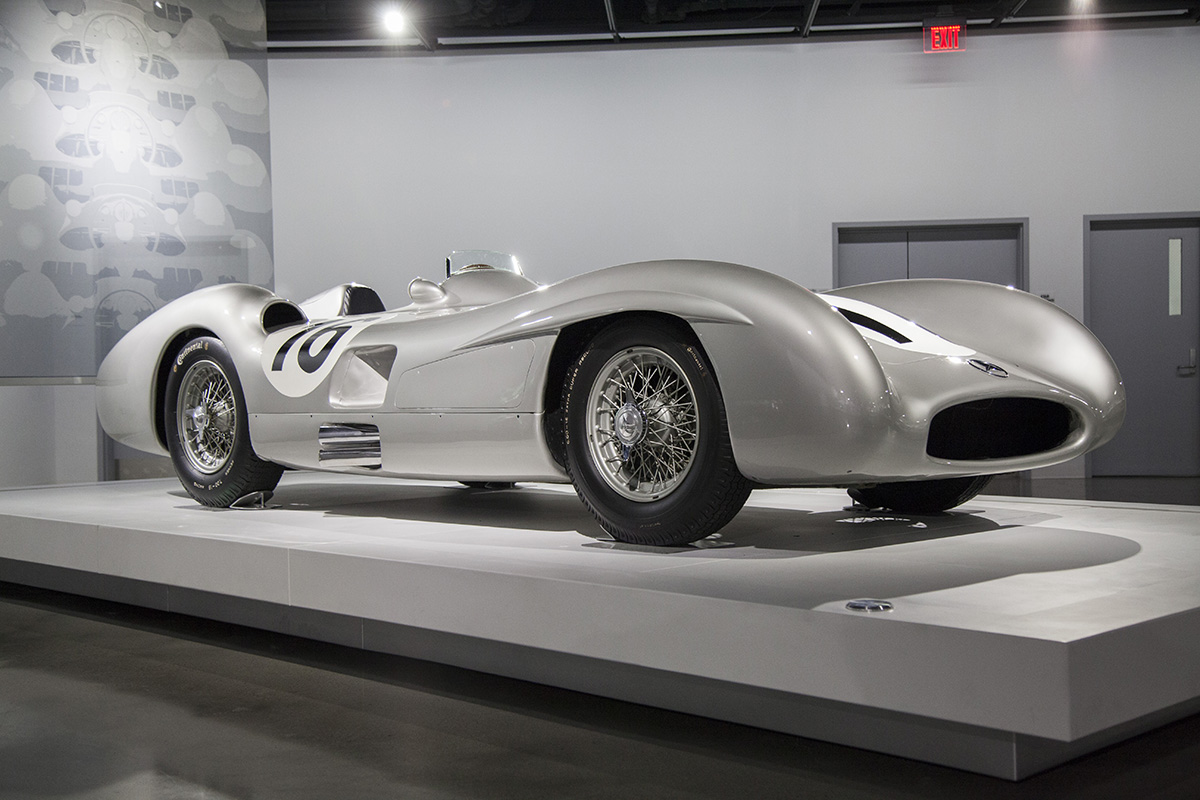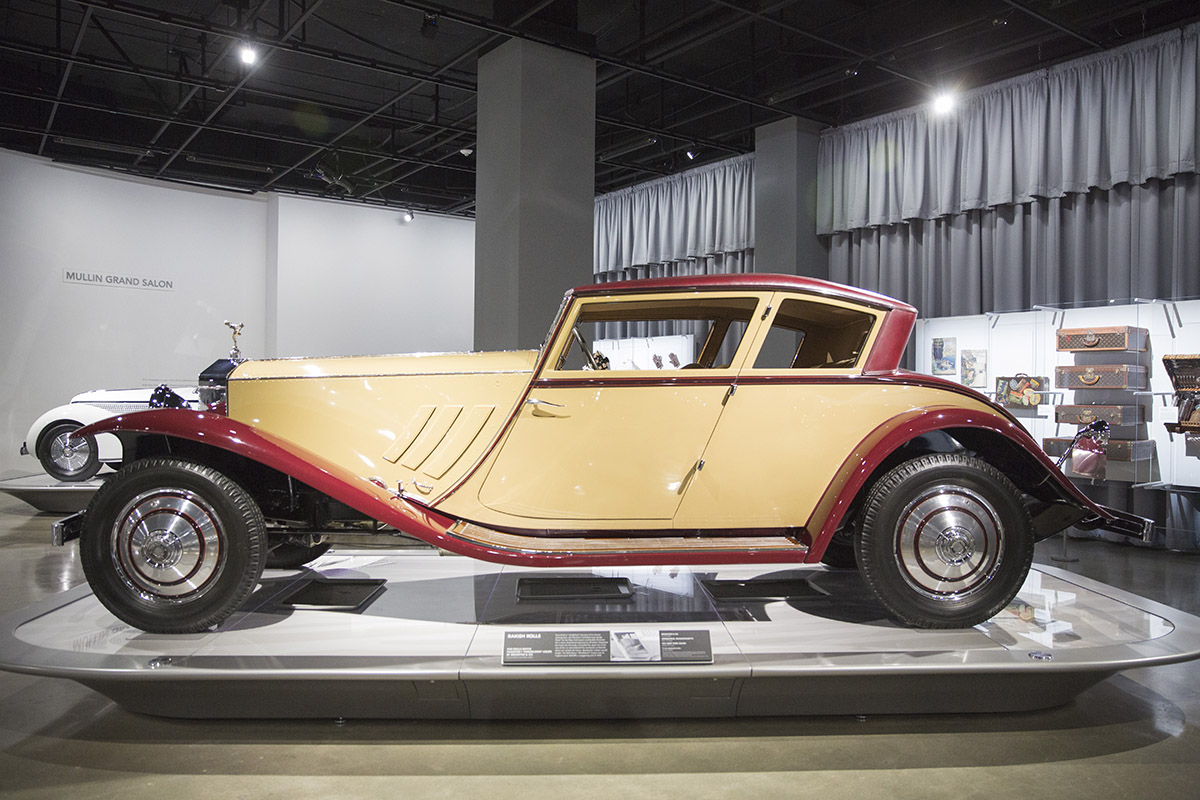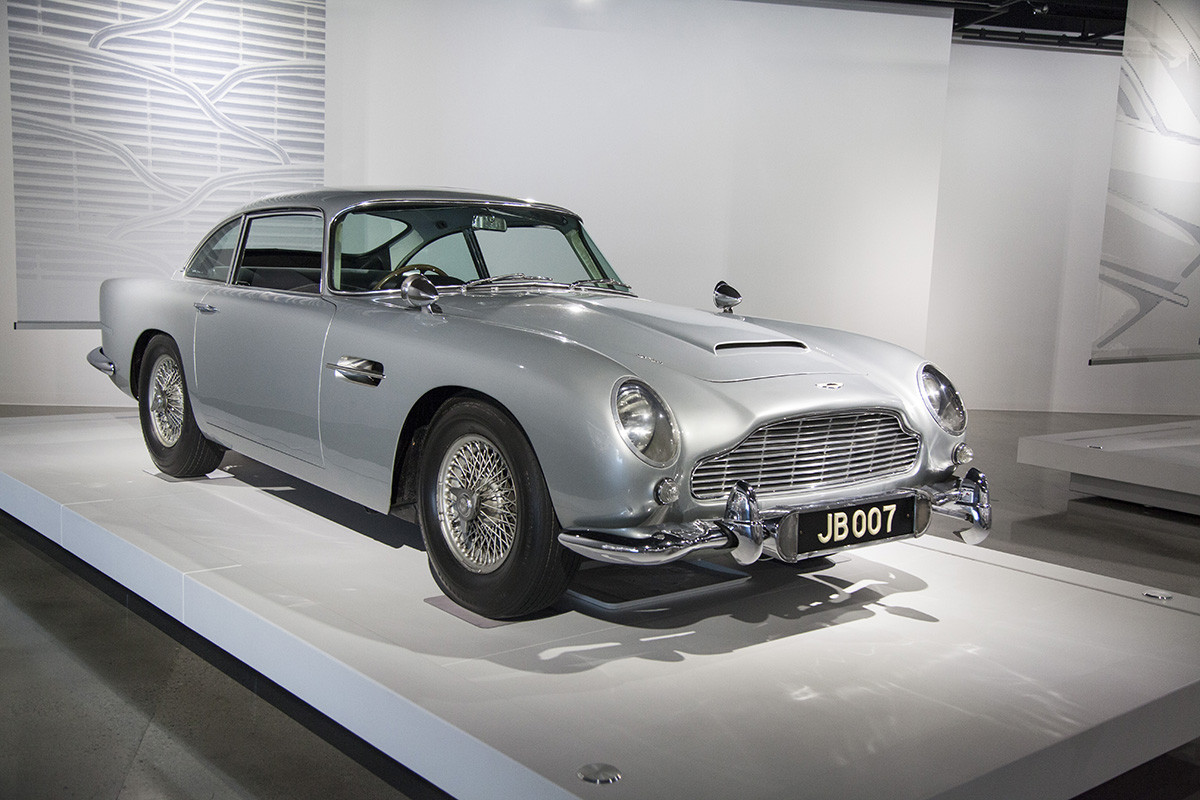Words by Marc Haefele, Senior Arts Writer, Bermudez Projects
Architects Kohn Pedersen Fox’s Petersen Museum is mostly about externals. It looks like a great heap of molten peppermint candy.
Like Tom Wolfe’s “The Kandy-Kolored Tangerine-Flake Streamline Baby,” you think: cars as sweets. What could be better than a Meta-Modern confectionary box to confine all these glistery riches of the road that comprise the Petersen Collection?
As in the new Broad museum, there is a low-lying vault of further treasures. Unlike at the Broad, you can’t peek in at them. Another twenty bucks, however, gets you a guided tour, for which you must make an appointment. I just paid the basic $24 for entry and parking and walked in.
What grabbed me first off was this black monster of weirdness – an old-time, all-verticals 1925 Rolls, customized into a 1936 Belgian coupe with round doors and baroque aerodynamics: a car more suited for arriving someplace than driving there. Like many others cars on show, it’s an oddity, even a freak.
There are enough one-offs here to satisfy a fairly jaded visitor, but their preponderance militates against the notion of the car as a mass commodity. Common vehicles, but famous ones, do have a few placements in the ranks of Hollywood cars, which range from the Bond Aston Martin to “Breaking Bad’s” Pontiac Aztec and “Little Miss Sunshine’s” VW van. There is also a beautiful lineup of Kalifornia Kustoms of over 50 years ago: humble autos become Hot Rod power cars solely by the hard work and inspiration of talented working stiffs: dream machines as a folk tradition.
There are informative displays on automotive history and mechanical development and evolution. But automotive history itself is sometimes sanitized. The museum’s tag for its still-stunning 1950s streamlined Grand Prix Benz notes that Mercedes dropped out of auto racing in 1955, but downplays that this was due to the hideous slaughter of the Le Mans race crash of that year. I took a good look at a 500-hp Dodge V-10 motorcycle and wondered how anyone could survive a ride. It’s a bright, tidy overdose of metallic heroin. No mention of its certain hazards. As a poet once said of automobiles, “The cost is blood.”
These jewels of transportation are both more and less than Art. A singular car may be imagined by a genius like Ferrari, shaped by a craftsman like coachbuilder Zagato, but you don’t just hang it on the wall like a Dieberkorn. You drive it forth to ostentate the world. A true luxury car is an imposition on everyone else, an object of envy, admiration, maybe even hatred. In the deep South, I knew a white landlord who drove his silver Rolls Royce to his evictions of black tenants. 1960s New York political boss Prospero “Duke” Viggiano drove a top-of-the-line, tail-finned black Mercedes 300E – overflaunting the local mob guys in their bread-and-butter Fleetwoods. There was a lot more going on than just driving a cool car.
Augustus’ Imperial Rome laid hefty sanctions against over-jeweled ivory chariots.
America’s only sanction is the gas-guzzler tax. Gas guzzlers sell well anyway, particularly in formerly communist China and Russia. I don’t know what Kim Jung Un is driven around in, but I bet it isn’t very dainty. Whatever it is, it expresses his utter authority.
That’s what the elite Petersen cars do, in their promise of domination, fascination and flaunt. Just as the museum’s confectionary exterior proclaims the wealth of mechanical eye-candy within.
(Courtesy of Petersen Automotive Museum; museum exterior Courtesy of Ted7/Petersen Automotive Museum)

